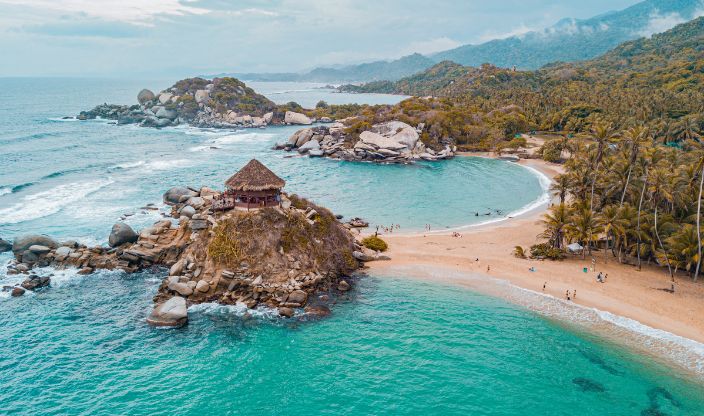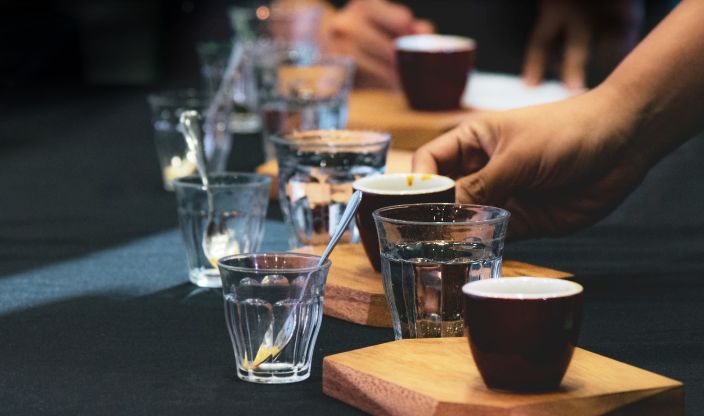Introducing Colombia
Colombia is a beautiful and captivating country with a wide collection of cultural, scenic, and historical highlights. It also boasts a wide variety of activities and sights to see, fascinating visitors with all interests, including historic towns, flourishing cities, magnificent National Parks, buried ancient monuments, and tropical beaches. A holiday to Colombia will be a magical experience, from the colourful palaces and cobblestone streets of Cartagena in the northern Caribbean, to the coastlines of Tayrona that are surrounded by wilderness, the valleys of the coffee region, and the contemporary, sprawling city of Medellin.
Located in the northwest of the continent, where Central and North America meet South America, Colombia has become known as the “gateway to South America.” It is the second-largest Spanish-speaking nation in the world and the fifth biggest nation in Latin America.
Colombia has a diverse landscape. The towering Andes mountains and volcanoes cut through its core, while the north and west are lined with tropical beaches. Also, there are extensive grasslands in the east known as Los Llanos and the Amazon Basin of Colombia, which covers almost the whole southern portion of the country is dominated by thick forests. The Chocó is a temperate, humid, and densely forested region in northwest Colombia that extends into Panama.
The region of Colombia you choose to visit will determine the ideal time to travel there. Region affects weather conditions far more than the seasons.
The highlands and lowlands are the main areas of distinction. In the highlands, the evenings are cold in higher elevations. Although there is little seasonal temperature difference in the lowlands, there are more frequent showers in the rainier months of April through June, as well as in October and November.
In general, Colombia is a year-round place to visit, especially in Medellin, where pleasant, dry weather is almost constant and temperatures range from 26°C to 28°C, and along the Caribbean coast, where temperatures average approximately 33°C.
Rice, maize, potatoes, cassava, and other legumes are major ingredients in Colombian cuisine, which is also profoundly influenced by regional products and its ethnic make-up. There are ample types of fish and seafood, and meats that are often eaten such as beef, chicken, pork, and goat.
Colombia also abounds in a variety of tropical fruits, including lulo, papaya, cape gooseberry, feijoa, guava, and passion fruit.
Key foods include:
Ajiaco: Chicken, three types of potatoes (papas criollas, sabaneras, and tocarrenas), corn on the cob, and the herb guascas are typically used to make Colombian national dish of ajiaco.
Bandeja Paisa: Red beans, white rice, chicharrón, carne en polvo, chorizo, fried egg, ripe plantain, avocado, and arepa are all ingredients in this filling national dish.
Pandebono Colombiano: It is freshly cooked bread with delicious flavour. Its key components are yuca flour, cheese, and eggs. This Colombian cheese bread is typically shaped by bakers into balls or bagels.
According to historians, the earliest inhabitants of Colombia arrived there some 20,000 years ago. Approximately 8,000 years later, inhabitants in the Magdalena Valley developed into the Chibcha empire, and later the Muisca.
When Spanish explorers reached Colombia around 1500, a colony wasn’t established until 1525. Due to their obsession with finding gold and other treasures, these invaders had already subdued the Muisca and plundered all of their wealth and jewellery by the year 1538. For approximately 250 years, Spain ruled over Colombia. Bogota quickly followed Cartagena’s declaration of independence in 1811 as well. Following its independence, Colombia joined a sizable nation known as New Granada. By 1835, the nation had disintegrated, and Colombia had become an independent country.
Indians, Africans and Europeans make up most of the population. The distinctive cuisine, music, culture, and art of Colombia are a result of this diverse fusion.
Mangrove Forest Canoeing, Choco
Embark on a sailing adventure from the village of Jovi, along the rivers teeming with mangroves in the Choco area.
Tayrona National Park, Santa Marta
Visit the most visited national park in the country, renowned for its beaches its jungle and fauna, hiking trails, and horseback riding excursions.
Mamancanna Reserve, Santa Maria
In northern Colombia’s Mamancanna Reserve, you can go ziplining through the treetops, rock climbing and trekking for an absolutely thrilling day of fun.
Monserrate Cable Car, Bogota
Ride in a cable car over Bogota to reach the Monserrate peak for an extraordinary vista over the whole city.
Recommended Colombia Specialists
Top Locations in Colombia






